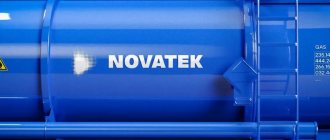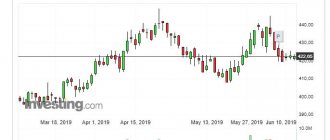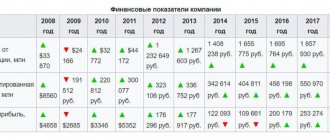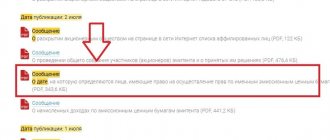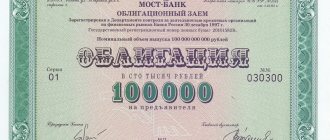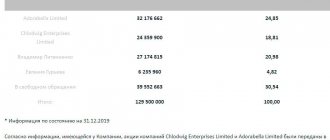Joint Stock Company Rosneft is the largest Russian company. It produces, sells and processes gas and oil products both in Russia and abroad. The company's main assets are concentrated in Russia.
Rosneft has an extensive sales network and continues to actively develop it.
NK Rosneft is currently the leader in the Russian Federation in terms of market capitalization (in particular, it is ahead of Gazprom by 5 billion US dollars). The state owns just under 70 percent of the company's shares. In 2021, Rosneft shareholders approved a number of potential transactions to attract thirteen billion loans.
Shareholders of Rosneft
As of November 1, 2021, the company has reported holders holding more than five percent of the company's capital. Thus, a 69.5 percent share of the authorized capital is owned by Rosneftegaz JSC, which is one hundred percent owned by the state. B.P. Russian. Investments Limited owns a 19.75% stake. NPO Joint Stock Company "National Settlement Depository" - 10.36%. The remaining securities are in free circulation. They are owned by both legal entities and individuals, including unidentified ones, which amounts to less than five percent of the shares. In 2021, a number of important decisions were made, namely: the company was transformed into a public joint-stock company (the previous organizational and legal form was an open joint-stock company) . The title of the position of president was also changed to CEO (Chief Executive Officer), which in Russian translation means “chief executive officer.”
Photo: Andrey Rudakov, bloomberg.com
How did the price dynamics of Rosneft shares change, and where did the largest Russian oil corporation get its debts?
Rosneft shares. Story
In September 1995, the Russian government transformed Rosneft into an open joint-stock company. For more than 10 years, all shares, 100% of which belonged to the state.
Only in July 2006, the company placed its first IPO, launching sales of shares on the Russian trading platforms RTS and MICEX, as well as on the London Stock Exchange.
The initial public offering reached a total of $10.7 billion, becoming an unprecedented case in the domestic oil industry. At the global level, Rosneft's IPO ranked fifth among the largest stock market offerings in history.
Photo: kapitalogiya.com
Shares of 1.411 billion units traded at $7.55 per share. The first buyers of securities were SINOPEC, Petronas, CNPC, BP. About 150 thousand Russian individuals received the status of Rosneft shareholder, who in total purchased shares for more than $750 million.
Since July 2006, NK securities quotes have been constantly changing, sometimes rising and sometimes falling, depending on global market conditions. As of July 19, one share of Rosneft was valued at 220.32 rubles.
According to archival trading data, in the company’s “pilot” year of 2006, the share price dropped to its lowest value on September 1 – 194 rubles. Then quotes began to rise, never falling below 200 rubles, and by November they rose to +/- 230 rubles. By December 29, 2006, one share of Rosneft was worth above the starting level - 242.96 rubles.
Source: monetarism.ru
In 2007, quotes mostly remained at the level of 230-240 rubles. The cost of one share reached its limit on February 5 - 241.77 rubles, then prices gradually went into a slight decline, consolidating by the end of the year to the level of 229 rubles.
The global financial and economic crisis of 2008 provoked a stock market crisis. Shares of Russian companies fell several times, including Rosneft.
If on January 9 one security was equivalent to 231.7 rubles, then by the beginning of February it decreased to an average of 170-190 rubles. The maximum value during the crisis year of 2008 was recorded on June 2, when one share was valued at 287.97 rubles.
However, after that the quotes began to decline sharply, collapsing at the peak on November 20 to 79.05 rubles. Compared to the highest indicator for the entire period of trading, the price of one share of Rosneft fell by more than 3 times. During the last month of 2008, the price of securities reached a maximum of 117.7 rubles.
Screenshot: calc.ru
Throughout 2009, prices remained at a low level in the range of 100-170 rubles per share. Small jumps up were recorded on February 6 (220.05 rubles), June 3 (220.5 rubles) and September 23 (227 rubles). Only since October the shares have leveled off to an average of 230-250 rubles.
The instability of the stock market continued in 2010-2011. Rosneft shares fluctuated from low to high values. For comparison, on July 11, one security cost 185.51 rubles, on April 4 – 254.95 rubles. In 2011, the highest figure of 271.84 rubles was observed in February, the lowest of 184.38 rubles was observed in September.
Another collapse in quotations began in 2014, during the currency crisis in Russia. Due to the rapid fall in oil prices, the ruble weakened sharply: at particularly critical moments, it depreciated against the dollar by more than 2 times. As expected, Rosneft securities collapsed: if at the beginning of the year one share cost about 230-250 rubles, then by mid-December it was only 194.15 rubles.
Since 2015, Rosneft quotes have shown growth, with the exception of January 10, 2021, when the price of one share fell to 232.1 rubles. Since August 2021, shares have risen to an average of 400 rubles and generally have not fallen below this value. As of November 7, 2021, the share price rose to 463.5 rubles, and by January 21, 2021, it soared to 486.15 rubles.
Composition of shareholders of NK Rosneft as of March 1, 2020: JSC Rosneftegaz (50%); Russian Investments Ltd (19.75%); BP Russian Investments Ltd (19.75%); QH Oil Investments LLC (18.93%); CJSC National Settlement Depository (10.98%).
Less than 0.01% is owned by the Russian Federation represented by the Federal Agency for State Property Management. Also, less than one percent is held by individuals (0.33%), other legal entities (0.01%) and unidentified persons (less than 0.01%).
The outbreak of the coronavirus epidemic “has made its own adjustments.” Global market players found themselves powerless in the face of an irreversible drop in demand for oil and a collapse in prices.
Even the OPEC+ agreement did not save us, despite the fact that cartel members planned to artificially reduce oil production. During the summit of oil exporting countries on March 5-6, 2021, Russia refused to participate in the agreement, causing a severe collapse in prices.
Read about why Russia broke the OPEC+ deal by following the link.
Against the backdrop of the deal being broken, Rosneft shares fell first on March 9 to 339.7 rubles, then on March 18 to 234 rubles. Having recovered slightly to 353 rubles by April 9 after successful re-negotiations, the oil company’s quotes fell again to 307.9 rubles by April 20.
Coincidence or not, at the end of March Rosneft for the first time began purchasing its own shares through UBS Bank, which back in 2018 appointed a special independent agent for purchase in case of “significant market volatility.”
During trading on March 23, 2021, UBS bought 4.936 million shares and 1.889 million global depositary receipts (GDR) for Rosneft.
Rosneft's debts
The transformation of Rosneft into an open joint-stock company, at first glance, gave a powerful impetus to the growth of capitalization. However, over the years, the company's debts grew exponentially.
By the beginning of 2021, judging by the financial statements according to IFRS, Rosneft’s debt amounted to 4.391 trillion rubles, and the total volume of debt obligations reached 8.486 trillion rubles. The amount is, to put it mildly, significant, given that the company flaunts high production figures with enviable regularity.
Total debt of Rosneft, trillion rubles
First of all, Rosneft acquired debts due to the expansion of its portfolio of strategically important assets, since for the most part it took funds for large transactions from creditors.
The largest source of “financial support” for Rosneft over the past 15 years has been CNPC. In 2005, the company entered into a five-year contract with a Chinese corporation for the supply of 48.8 million tons of oil.
As part of the agreement, Rosneft received a credit of $6 billion against future supplies. According to official data, the funds were used to pay off the debt for Yuganskneftegaz, one of the divisions of Yukos, acquired in 2004 for $9.35 billion.
However, China began to deny involvement in the purchase of the asset, after which Rosneft stated that it had in fact received money for the asset from Russian banks, but which banks exactly remained a mystery.
To take control of YUKOS assets, Rosneft in 2007 took out a large bridge loan in the amount of $22 billion, with which it acquired VSNK, the Achinsk Oil Refinery, Tomskneft and the Angarsk Petrochemical Company».
RN-Yugansneftegaz Photo: rosneft.ru
In 2009, CNPC provided Rosneft with another loan, but in the amount of $15 billion (by the way, Transneft received $10 billion at the same time). According to the contract, the company agreed to supply 300 million tons of oil over 25 years.
This time, Rosneft needed a large amount of funds to “restructure debt and implement investment projects” - at least that’s what the company itself said.
A couple of years later, the company announced a revision of the agreement. The contract, without clear explanation, was “narrowed” to 20 years. The Prosecutor General’s Office took up the sudden change in the terms of the deal in 2012 at the request of State Duma deputy Nikolai Kolomeytsev. The official became interested in the contract after media reports that in fact Rosneft and Transneft were under contract to sell oil to China at a discount of $1.5 per barrel.
In 2013, Rosneft, within the framework of a previously concluded contract with CNPC, raised an additional $2 billion for the Vankor field development project.
In 2012, Rosneft needed funds to purchase from the consortium AAR and British BP a 50% stake in TNK-BP for $56 billion. NK took out two loans in the amount of $17 billion. The list of creditors included: Bank of America Merrill Lynch, Barclays Bank, BNP Paribas, BTMU, Citibank, Credit Agricole, ING Bank and a number of other international banks.
To purchase TNK-BP, Rosneft had to use its reserves: Vedomosti learned that the corporation withdrew over 100 billion rubles from its Sberbank accounts.
Photo: masterfutures.ru
In October 2021, Rosneft acquired a 50% stake in Bashneft for 329.7 billion rubles. And at the beginning of January 2021, the company sold 19.5% of its shares for €10.5 billion to the Swiss commodity trader Glencore and the Qatari investment fund QIA. After a series of resales of the purchased share, the final owner of 19.5% became QHG Investment, established by Glencore and QIA in England.
The sale of shares in the media was associated with an attempt to cover part of the debts after the purchase of 50% of Bashneft, which, by the way, two months after the transaction provided the corporation with a five-year loan in the amount of 50 billion rubles.
And a few more facts. At the end of 2021, the joint venture of Rosneft and Gazprom Neft JSC Messoyakhaneftegaz provided a loan of 100 billion rubles to Gazprombank and Sberbank. Also in 2021, Sberbank provided a loan for another 124.9 billion rubles, but Rosneft did not disclose its motives.
At the moment, Rosneft still has debt obligations to CNPC. According to the report for the fourth quarter of 2021, the company has $9.4 billion left to pay the Chinese bank, the repayment period is 2029.
There are two more creditors listed in the same quarterly report. Rosneft must pay $2 billion to Irish Rosneft International Finance Limited by 2022. The second creditor is the shareholders themselves: the company owes 600 billion rubles to the purchasers of securities; full repayment of the debt is scheduled for until 2026.
In general, by the end of 2021, Rosneft slightly reduced the amount of debt. Over the past year, net debt was reduced by 174 billion rubles, Rosneft paid creditors and bondholders 183 billion rubles for short-term loans, 380 billion rubles for long-term loans, and returned another 344 billion rubles in oil and petroleum products. However, total debt obligations are still high – 7.798 trillion rubles.
PJSC Rosneft: register of shareholders
Public Joint Stock Company Neftyanaya, in full compliance with the Federal Law, maintains, classifies, records, and stores the data of all shareholders. The registrar is LLC "Reestr-RN". Maintaining the register of shareholders is the main type of work of Reestr-RN LLC. The company owns a central office in Moscow and twelve branches in the regions.
In 2021, the Rosneft shareholder council criticized the policy of the company's top management in terms of publishing financial statements.
The shareholders drew attention to unreliable data in the reporting. At the moment, the financial condition of the company allows investing and paying dividends to the company's shareholders. The company forecasts production growth in 2016-2018, subject to favorable investment policies.
